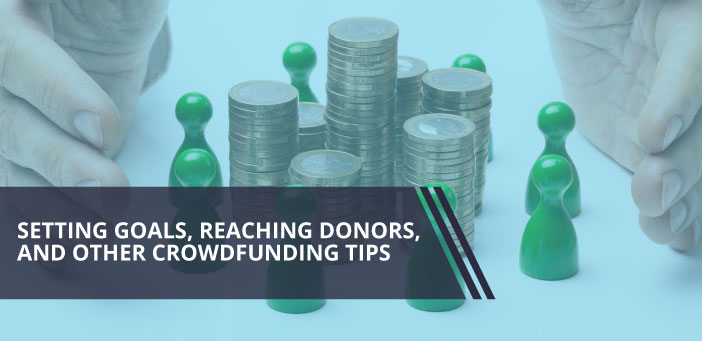Marketing your organization on a budget is easy when you know the right strategies and tools to use. Explore these top tips to step up your marketing strategy.
By Olivia Mode-Cater
Picture this: your organization is about to host another fundraising event. You’ve assembled a fundraising team, booked a venue, and put together the perfect program agenda. Once it comes time to get the word out about your event, you quickly realize you don’t have that much money left in your budget to create promotional materials and decide to deprioritize marketing. However, this results in low attendance numbers, causing you to miss the mark on your fundraising goal.
If this sounds like a situation your organization has been in before, you need to update your approach to marketing. Even if you’re strapped for cash, there are a variety of ways to get the word out about your events, campaigns, and current initiatives without spending a single dollar!
In this article, we’ll go over three money-saving tips that you can use to market your organization and get the support you need:
- Keep your website content fresh
- Generate quality social media content
- Create compelling email newsletters
Whether you’re a dance studio hoping to promote your donation form for your year-end campaign or a nonprofit that wants to market its monthly giving program, the right marketing strategies and tools can help. Let’s dig into the essentials.
Keep your website content fresh
Your website is a rich information hub that acts as the focal point of your digital presence, but are you harnessing its full potential? By updating your website regularly and using it to spotlight your upcoming events, campaigns, projects, and more, you can successfully expand your reach and bring in new audiences for your organization.
Leverage these cost-effective strategies to shape your website into a powerful marketing tool:
- Create event and campaign landing pages: Dedicated landing pages can help you dive deep into the details of your upcoming events and spotlight why it’s worth your audience’s time to register, donate, or take another relevant action. Cover all the logistical details, including the date and time of your event or campaign, its purpose, and how to get involved. Be sure to embed your registration or donation form directly into your landing page to help drive conversions and streamline your users’ actions.
- Share testimonials: Testimonials can provide great social proof that drives prospective audience members to support your organization. Create a testimonials page that features varied quotes from community members explaining why they support your organization or are eager to receive your services. For example, a dance studio might collect testimonials from students, parents, and alumni to show the value in signing up for classes. Similarly, nonprofits can feature testimonials from beneficiaries, explaining how your organization has made a difference in their lives.
- Generate blog content: Consistent blog content can keep community members tapped into your organization and eager to sign up for your upcoming events. Write content regularly, such as posting every other week to communicate important updates about your organization. To help offload the burden of creating content, you can also ask your beneficiaries, volunteers, donors, or loyal customers to create content reflecting on their experiences.
As you refresh your website and create new content, make sure to widely promote these links to your audience. For example, if you recently created an event landing page to spotlight your upcoming peer-to-peer fundraising event, you could summarize the purpose of this event in your email newsletter and include a link to your landing page for people to learn more and register.
Keep in mind that taking a multichannel approach, such as sharing links on social media or through QR codes in your direct mail, can help you direct multiple audiences to your website and keep your organization at top of mind.
You might also leverage a dedicated communication app so you can more easily reach your target audience and ensure you have their support for your upcoming project. There are many cost-effective marketing platforms available that have built-in communication tools, so do your research to find the best solution for your organization. While investing in a marketing solution might seem like a big expense upfront, you’ll be able to derive a high ROI from it year over year, ensuring your organization can make back its investment and more.
Generate quality social media content
With audiences spending more time on social media than ever before, regularly posting social media content is an easy money-saving strategy to ensure your content gets in front of your target audience. However, spamming content about your upcoming event or campaign can have the opposite effect, turning prospective audiences away from your organization and decreasing your engagement levels.
Instead, construct a quality and intentional social media strategy that is tailored to your audience and supports your marketing goals. Use these tips to get started:
- Share a variety of visuals: Posting the same type of content over and over can quickly bore your audience. Generate a variety of visuals, such as photos from your latest event or infographics that highlight your organization’s impact, to grab your followers’ attention. You could also tap into the power of video, which can help you convey important information in an easily digestible format. Double the Donation’s guide to fundraising videos recommends keeping your video short and sweet and ending in a firm call to action so audiences know how to get involved.
- Use catchy hashtags to expand your reach: Hashtags can open up your community to new audiences and boost brand visibility. For example, if you’re a dance studio hosting a dance-a-thon, you might use the hashtag #DancingForACause or #DancingForDollars to create interest. You can also feature your dance studio name or city in your hashtag to draw local audiences to your event, such as #YourCityDanceAThon or #YourStudioNameDanceAThon. When participants post about your event, encourage them to pair it with your dedicated hashtag.
- Consider hosting social media contests: A social media contest is a great way to rally your whole community around your organization while growing your reach. You might ask supporters or customers to post videos about why they support your organization, and then award the audience member with the greatest number of likes or comments with a prize. Pair a hashtag with your contest and ask audiences to tag your account in their post so people in their personal networks can learn more about your organization.
As you share content on social media, track metrics, like impressions and likes, to assess your performance. You may have to make adjustments to your content to better appeal to your audiences and drive greater engagement levels.
Create compelling email newsletters
Your email newsletter is the perfect place to remind people of your upcoming activities and include links to your website and social media accounts. To strengthen your email newsletters and maximize their value, use these best practices:
- Include an eye-catching subject line: Your audience receives anywhere from tens to hundreds of emails a day. To stand out from the crowd you’ll need to create a brief, yet compelling subject line that piques your subscribers’ interests. For example, a subject line like “Don’t Miss Out On Our Annual Halloween Fundraiser!” or “Register Tonight for the Event Of the Season!” summarizes the central purpose of the newsletter while drawing the reader in so they feel motivated to open your email.
- Break up your content with visuals: Make your email newsletters even more engaging by adding a variety of visuals, like photos, videos, and graphics. Ensure these elements are reasonably sized to create a positive user experience and avoid using too many visuals so your audience isn’t overwhelmed.
- Use clear calls to action: Firm calls to action direct your audience to their next step so they can easily complete it. Create call-to-action buttons that stand out from the rest of your newsletter content and ensure they are hyperlinked to the relevant resource, like your donation page or event registration form. You’ll also want to use succinct, clear language that creates a sense of immediacy. For instance, a call to action like “Donate by midnight to get your gifts matched!” gets to the point quickly while using time-bound language to spur action.
DanceStudio-Pro’s guide to dance studio marketing also recommends using email to show appreciation to your audience. Once your supporters complete a target action like donating or registering for an event, automate a thank-you email conveying your gratitude for their continued support. This practice will help you develop strong relationships with your audience that will benefit your organization for years.
Wrapping Up
Marketing your organization doesn’t have to cost your team an arm and a leg when you have the right tools and strategies! Assess your existing toolkit and make adjustments to your marketing plan as needed to optimize your promotional strategies. Keep in mind that adding an all-in-one marketing platform to your tech stack can streamline your approach and help you save money in the long run.
Olivia Mode-Cater is an industry leader in dance education and dance entrepreneurship, having presented on these topics on a national and international level. Olivia’s work draws on her experiences as a veteran dance educator in all teaching settings: higher education, PK-12 schools, and studios. Olivia proudly joined the DanceStudio-Pro team in 2021 and now serves as the Director of Strategic Initiatives.















 Year-end fundraising season is here and it’s the busiest time of the year for most nonprofit organizations.
Year-end fundraising season is here and it’s the busiest time of the year for most nonprofit organizations.













 and her team help create content aimed at maximizing organizers’ fundraising potential and furthering their mission to raise awareness for the cause or passion that means the most to them.
and her team help create content aimed at maximizing organizers’ fundraising potential and furthering their mission to raise awareness for the cause or passion that means the most to them.